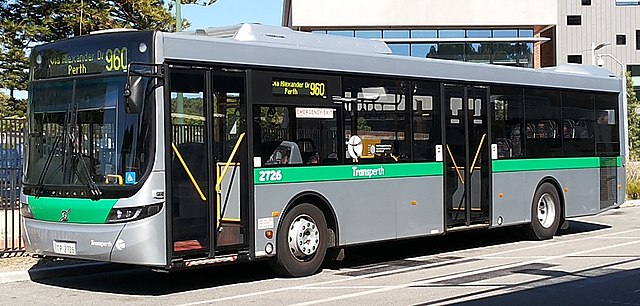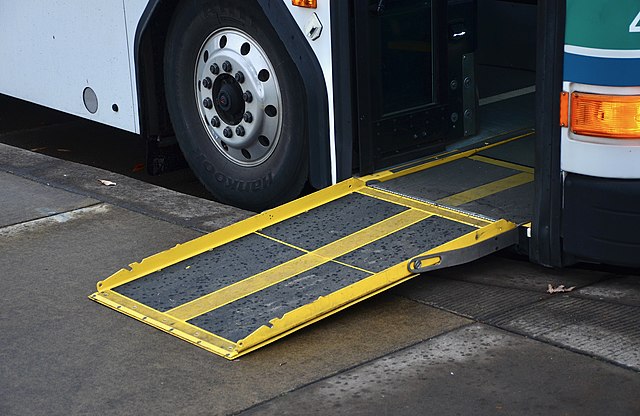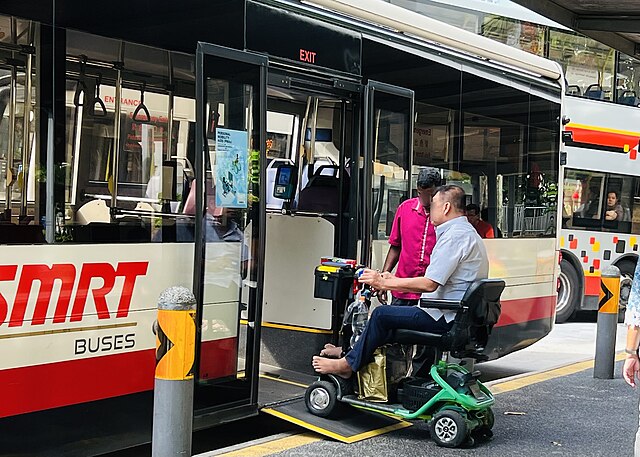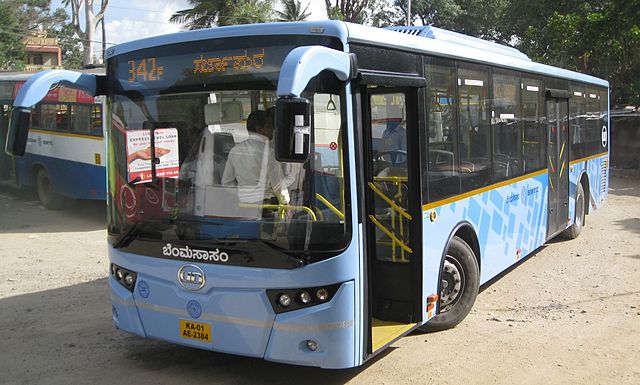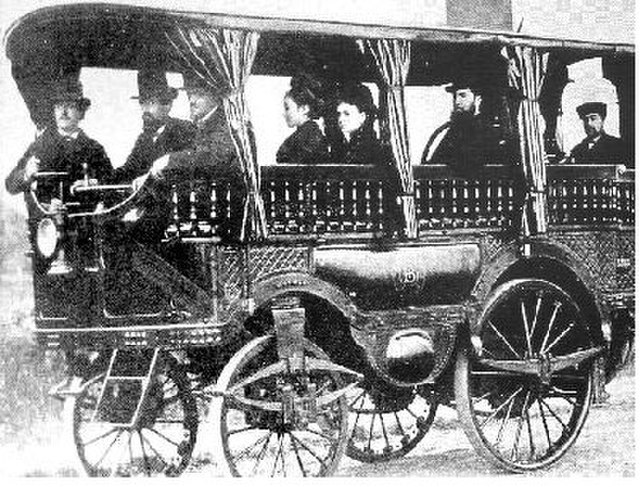A low-floor bus is a bus or trolleybus that has no steps between the ground and the floor of the bus at one or more entrances, and low floor for part or all of the passenger cabin. A bus with a partial low floor may also be referred to as a low-entry bus or seldom a flat-floor bus in some locations.
A low-entry bus of Volgren Optimus bodied Volvo B7RLE in Australia.
Many low-floor buses feature extendable ramps.
A low-floor bus can provide accessibility for wheelchair users and those on personal mobility devices, often through the use of a wheelchair ramp.
A BMTC UD SLF bus
A bus is a road vehicle that carries significantly more passengers than an average car or van, but less than the average rail transport. It is most commonly used in public transport, but is also in use for charter purposes, or through private ownership. Although the average bus carries between 30 and 100 passengers, some buses have a capacity of up to 300 passengers. The most common type is the single-deck rigid bus, with double-decker and articulated buses carrying larger loads, and midibuses and minibuses carrying smaller loads. Coaches are used for longer-distance services. Many types of buses, such as city transit buses and inter-city coaches, charge a fare. Other types, such as elementary or secondary school buses or shuttle buses within a post-secondary education campus, are free. In many jurisdictions, bus drivers require a special large vehicle licence above and beyond a regular driving licence.
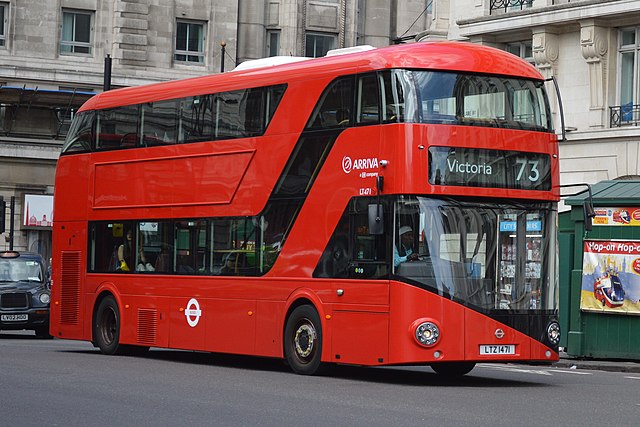
A New Routemaster double-decker bus, operating for Arriva London on London Buses route 73 (2015)
A New Flyer trolleybus operated by the Toronto Transit Commission in 1987
An early horse-drawn omnibus from mid-nineteenth century
Amédée Bollée's L'Obéissante (1875)

